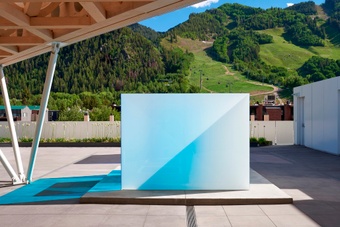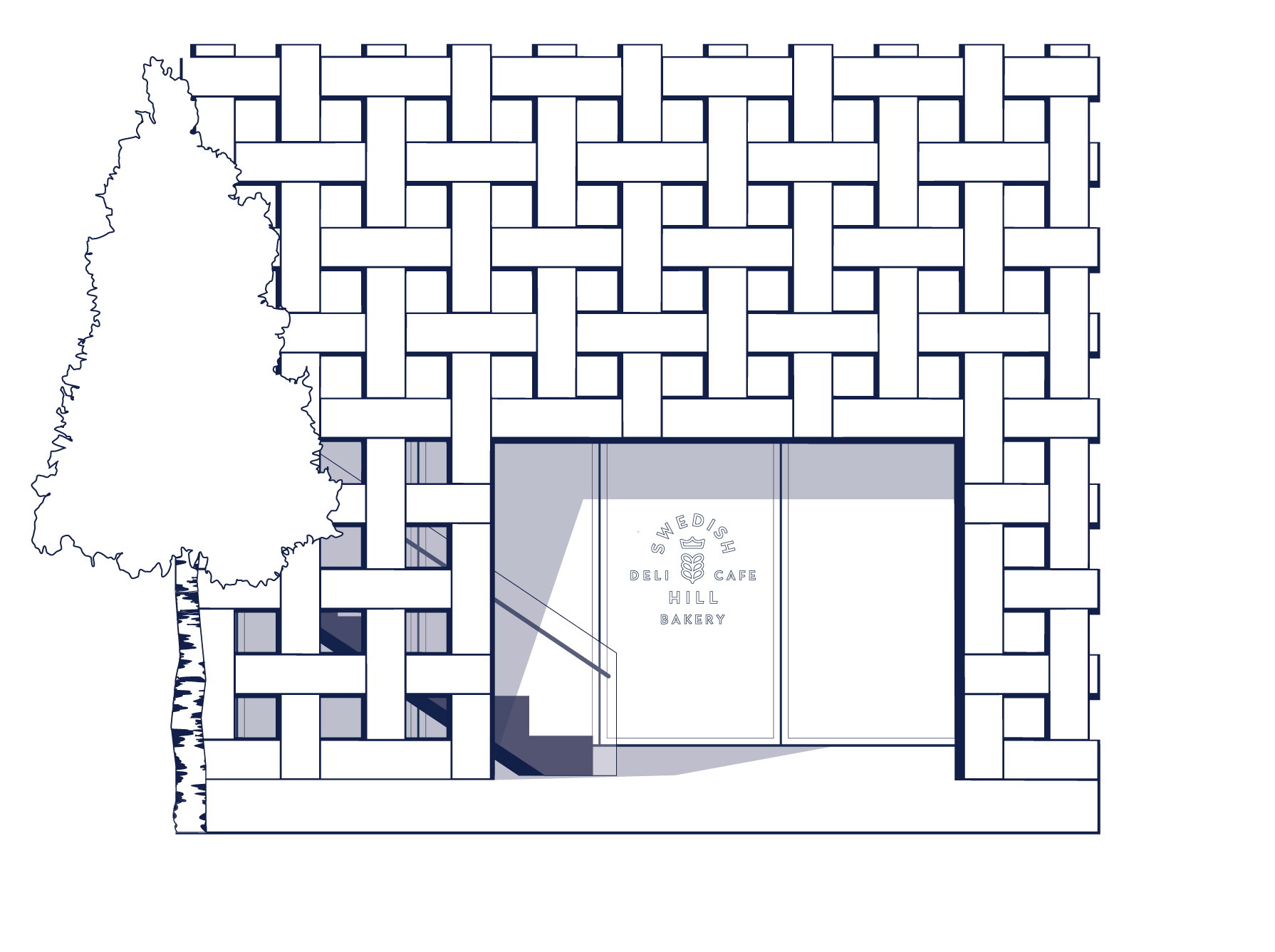Aspen Art Museum
- Categories
- All events
- Talks and Lectures
- Member Events

- For more information on how you can join the AAM, please visit the Street Level Visitor Information Desk, inquire in the Shop, or call 970.925.8050.

- Swedish Hill Aspen is open on our Rooftop from 8AM–3PM

- Aspen Art Museum is an artist-founded institution dedicated to supporting artists in the development of bold ideas to shape our museum and the field of art today.
Mungo Thomson
ArtCrush
2024
About
Mungo Thomson’s multidisciplinary practice embraces film, sound, sculpture, and photography. His conceptually rooted projects are astonishing in their ambition and inventiveness, with wry humor at their core. Take some of his experiments with sound: for The Bootleg Series (2003-04), Thomson recorded the ambient sound at gallery openings and then played these tapes of chatter and noise at subsequent exhibitions to disquieting effect. At the Whitney Biennial in 2008, he created Coat Check Chimes, replacing the venue’s existing hangers with versions designed to ring like percussive triangles, allowing museum-goers to create music while hanging up their coats. For Crickets (2012-13), Thomson worked with the composer Michael Webster, transcribing field recordings of crickets from across the world and turning their familiar chirpings into a musical score for orchestra.
Thomson brought this playful, disruptive approach to his 2015 exhibition at Contemporary Art Gallery, Vancouver, where the venue’s unopened mail was left to accumulate on the floor, gradually obstructing both the space and its institutional function. For Frieze Projects Los Angeles 2020, held on a New York City film set at Paramount Pictures Studios, Thomson returned to this idea, with a twist: he presented Snowman, a stack of Amazon boxes on the sidewalk outside a (fake) brownstone; the packages were cast in bronze, a perfectly rendered facsimile of the real thing.
Thomson’s project Time Life, presented at New York’s Karma earlier this year, took ten years to complete. It comprises a series of stop-motion videos made from the rephotographed pages of reference books, collated to create a dizzyingly high-speed digital flipbook. Projected onto large screens, to soundtracks by experimental musicians, these absurd documents, such as Volume 1. Foods of the World, 2014-22 (2022), are wholly original. With Thomson, it is impossible to know what might come next.
Artist Bio
Born in Woodland, CA, in 1969, Thomson lives and works in Los Angeles. His work has been exhibited internationally and is held in numerous public collections, including the Museum of Contemporary Art, Los Angeles, Walker Art Center, Minneapolis, and FRAC Ile-de-France, Paris.
Created earlier this year, November, 29, 1976 (Robert Rauschenberg), belongs to Mungo Thomson’s ongoing series of works based on the covers of Time magazine. Thomson employs human-scaled mirrors onto which he silkscreens the iconic title and red border of the magazine, together with other elements particular to the chosen issue: in this instance a striking yellow corner banner proclaiming “The Joy of Art.” In a 2019 interview published online by Garage, Thomson explains “This series came from the simple observation that time happens in a mirror.”
Thomson’s interest in Time began as an artist’s book produced with LACMA in 2011 which mapped the evolution of the Time logo over the years through a series of 90 drawings. Ten years in the making, his project Time Life was presented at New York’s Karma gallery earlier this year. Rephotographing the pages of the eponymous reference books, Thomson created stop-motion films which collated the content into a super high-speed digital flipbook.
The Time mirror series is characterized by a number of elements that permeate Thomson’s broad and ambitious multidisciplinary practice: his interest in archives, a desire to redirect our attention back to familiar objects, wry humor, and the creation of works which are not fixed, allowing any viewer on any given day a different experience. As Thomson observes: “I wanted someone to live with the artwork and see themselves reflected in it, every day, and that would complete the work.”
The wide-ranging, multi-media work of Mungo Thomson (b. 1969, Woodland, CA) approaches mass culture and everyday perceptual experience through a lens of deep time and cosmic scale, implicating the spaces of production and exhibition along the way in ever-widening extrapolations.
He has convened an orchestral ensemble to perform a score transcribed from the the chirping of crickets persuaded museums to let their incoming mail pile up unopened in the galleries for the run of an exhibition made a stop-motion film animation of his art dealer’s Rolodex, and replaced the coat-hangers in the Whitney Museum’s coat check with custom-made hangers modeled on orchestral triangles, transforming it into an enormous musical instrument.
Mungo Thomson attended the Whitney Museum Independent Study Program in New York and the Graduate Fine Art Program at UCLA. Recent solo and group exhibitions have taken place at The Henry Art Gallery, Seattle; The Museum of Fine Arts, Houston; The Museum of Contemporary Art, Los Angeles; Museo Jumex, Mexico City; the Hammer Museum, Los Angeles; The Contemporary Art Gallery, Vancouver; and The High Line, New York. He was included in The 2nd CAFAM Biennial, Beijing, China; The 2012 Pacific Standard Time Public Art and Performance Festival, Los Angeles; 2011 Istanbul Biennial, Istanbul, Turkey; The 2008 Whitney Biennial, New York; PERFORMA 05, New York; and the 9th Biennial of the Moving Image, Geneva, Switzerland.
His work is held in the public collections of the Los Angeles County Museum of Art, Los
Angeles, California; Museum of Contemporary Art, Los Angeles, California; Hirshhorn
Museum and Sculpture Garden, Washington, D.C.; Walker Art Center, Minneapolis,
Minnesota; Henry Art Gallery, Seattle, Washington; Museum of Fine Arts, Houston,
Texas; Museum of Contemporary Art, Miami, Florida; Whitney Museum of American Art,
New York, New York; Museo Jumex, Mexico City, Mexico; Frac Île-de-France, Paris,
France; and GAMeC, Bergamo, Italy, among others.
To register a bid or to request a condition report, please contact bid@aspenartmuseum.org.
ArtCrush
2024
free courtesy
Amy & John Phelan
- Aspen Art Museum
- 637 East Hyman Avenue
- Aspen, Colorado 81611
- t: 970.925.8050
- f: 970.925.8054
- info@aspenartmuseum.org
| Hours |
|
Tuesday–Sunday, 10 AM–6 PM
Closed Mondays
|
© 2024 Aspen Art Museum
General operating support is provided by Colorado Creative Industries. CCI and its activities are made possible through an annual appropriation from the Colorado General Assembly and federal funds from the National Endowment for the Arts.



General operating support is provided by Colorado Creative Industries. CCI and its activities are made possible through an annual appropriation from the Colorado General Assembly and federal funds from the National Endowment for the Arts.










